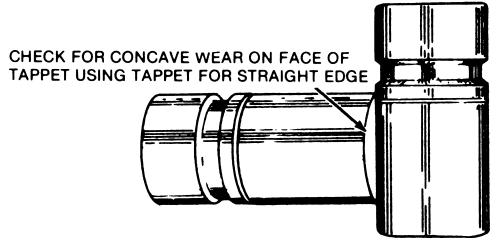Greetings all:
This is a slightly off topic post in that I need to replace the cam in my other in-line 6 cyl non-Ford car (Triumph, push rod, solid lifter) - but I figured the physics is essentially the same. Thank you in advance considering this off-brand question.
I managed to wiped a cam lobe after a mere 10K miles. The badly worn lobe looks like this: http://i290.photobucket.com/albums/ll27 ... 751725.jpg.
The rest of the lobes look like this: http://i290.photobucket.com/albums/ll27 ... 20a1b8.jpg I did all the proper: cam break-in time & lube, high ZDDP oil, etc. I like the cam grind, so after poking around the net, asking a few questions, etc, I decided to buy another from the same vendor. This grind is on a new chilled cast core.
This time I will buy the replacement lifters from the same source as the cam. When I went to order the lifters I see that the vendor's lifter description states that the lifters tappets) are ground truly flat. I have always heard that all "flat tappets" are slightly crowned. I contacted the vendor and his response is that his cam is "... ground without a taper on the lobe and should be run with a perfectly flat tappet..." and that his lifters have been ground flat for the past year (and that his race car and road car both still have crowned lifters).
I am a bit spooked with so little "in the field" development time on his flat lifters. I don't want to be spending $500 every 10K miles to replace cams.
I have always heard that flat lifters are really slightly crowned. All lifters that I have ever handled were crowned on the face - two contact surfaces could not be wrung together. Your thoughts?
This is a slightly off topic post in that I need to replace the cam in my other in-line 6 cyl non-Ford car (Triumph, push rod, solid lifter) - but I figured the physics is essentially the same. Thank you in advance considering this off-brand question.
I managed to wiped a cam lobe after a mere 10K miles. The badly worn lobe looks like this: http://i290.photobucket.com/albums/ll27 ... 751725.jpg.
The rest of the lobes look like this: http://i290.photobucket.com/albums/ll27 ... 20a1b8.jpg I did all the proper: cam break-in time & lube, high ZDDP oil, etc. I like the cam grind, so after poking around the net, asking a few questions, etc, I decided to buy another from the same vendor. This grind is on a new chilled cast core.
This time I will buy the replacement lifters from the same source as the cam. When I went to order the lifters I see that the vendor's lifter description states that the lifters tappets) are ground truly flat. I have always heard that all "flat tappets" are slightly crowned. I contacted the vendor and his response is that his cam is "... ground without a taper on the lobe and should be run with a perfectly flat tappet..." and that his lifters have been ground flat for the past year (and that his race car and road car both still have crowned lifters).
I am a bit spooked with so little "in the field" development time on his flat lifters. I don't want to be spending $500 every 10K miles to replace cams.
I have always heard that flat lifters are really slightly crowned. All lifters that I have ever handled were crowned on the face - two contact surfaces could not be wrung together. Your thoughts?

